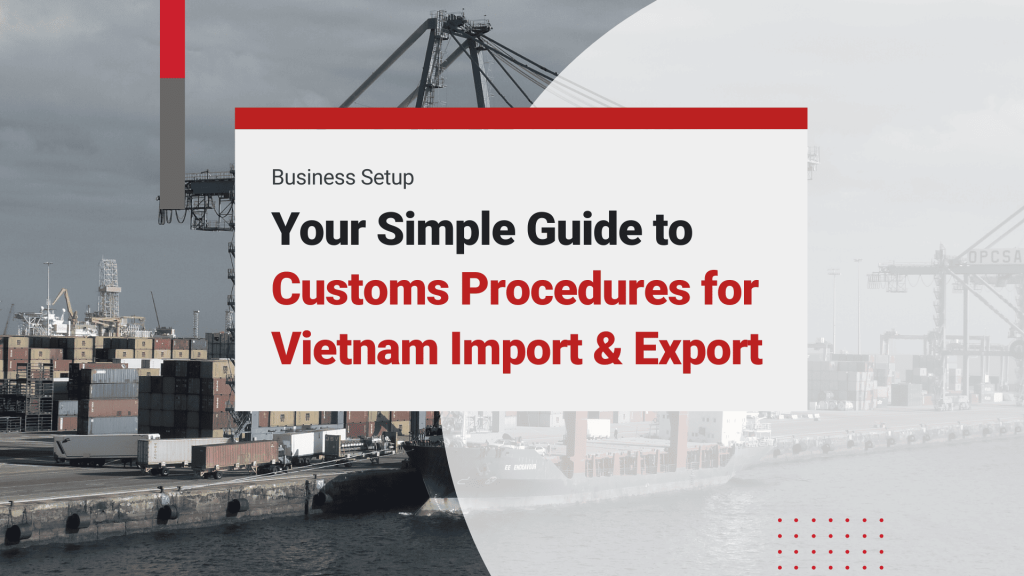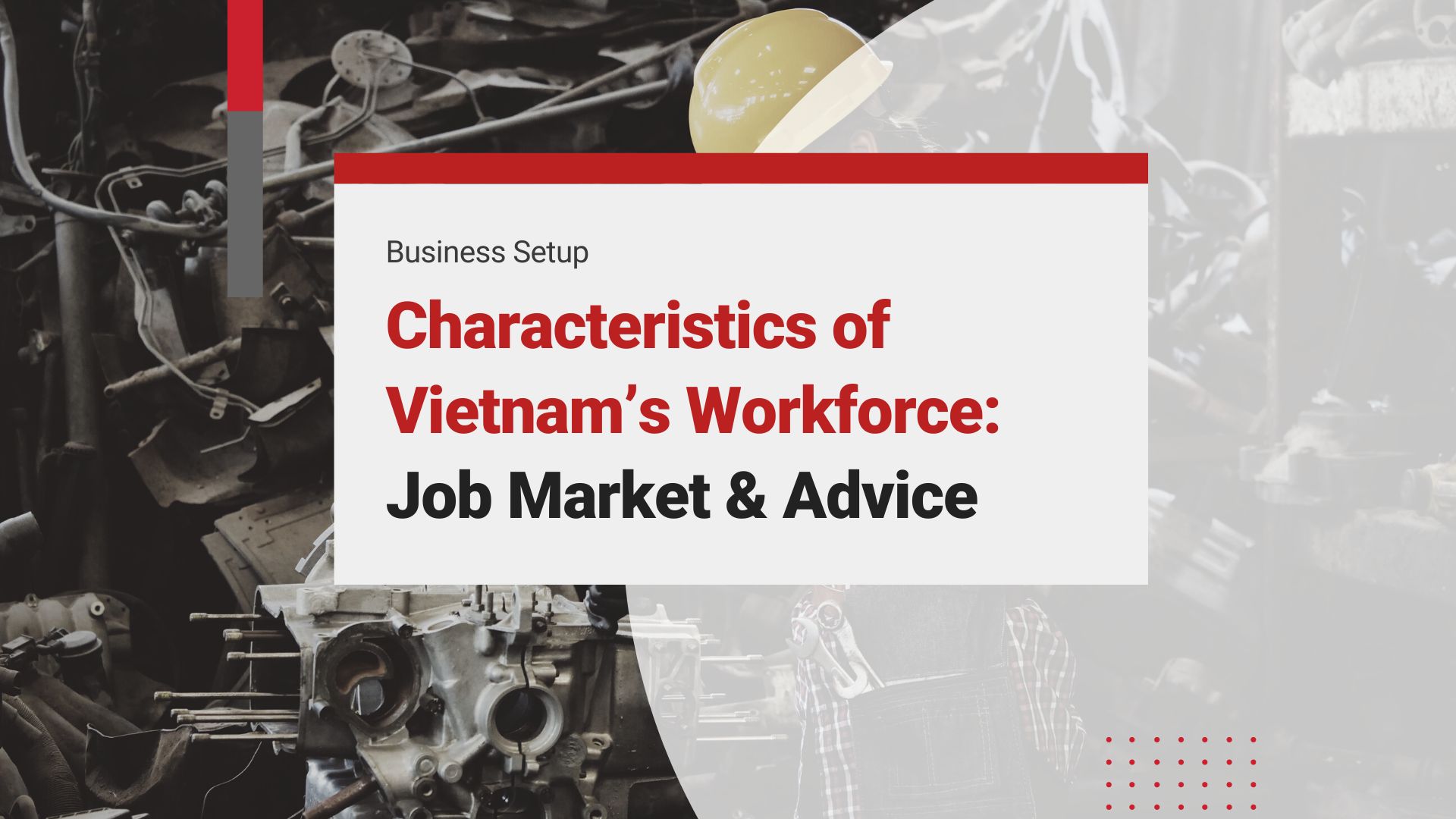
Vietnam’s 3,200 km coastline and network of seaports have positioned it as a regional logistics hub. Key ports include Hai Phong, Saigon, Da Nang, Quang Ninh (Cai Lan), and the Cai Mep–Thi Vai complex in Vung Tau, which handle most of the country’s maritime trade. Notably, Saigon, Hai Phong, and Cai Mep rank among the world’s top 50 busiest container ports.
Despite progress, Vietnam still ranks only 80th of 139 countries in port infrastructure quality (World Economic Forum), showing room for improvement. However, the country is rising fast — Agility’s 2023 Emerging Markets Logistics Index placed Vietnam 10th globally.
Air logistics also plays a major role, led by Noi Bai, Tan Son Nhat, and Da Nang international airports. Together, these gateways supported record trade turnover of US$786.3 billion in 2024 (with over $405 billion in exports), making Vietnam the world’s 17th largest trading economy and underscoring the need for efficient customs clearance procedures.
Investing in Vietnam? Check out InCorp Vietnam’s Product Registration Services
Discover the vital customs clearance procedures you must know and the developing import-export sector in Vietnam. Vietnam attracts foreign investors due to its developing economy, first-rate ports, and airports. Learn about the inspection, quality control, and documentation requirements for customs clearance. Learn about the paperwork required for imports and exports as well.
Understanding Customs Regulations in Vietnam
Understanding Vietnam’s import and export regulations is essential for foreign businesses. The country’s customs framework is governed by Customs Law No. 54/2014/QH13 and related decrees, covering all goods and transport vehicles entering, leaving, or transiting Vietnam. The law introduced the national single-window system and risk management to streamline clearance. In June 2025, new amendments were approved to further digitize procedures, including a requirement for priority businesses to connect their IT systems with customs for real-time data sharing — reinforcing transparency and efficiency.
Customs clearance involves checks on quantity, quality, specifications, and declared value. Certain goods, such as petroleum, fertilizers, electronics, food, and pharmaceuticals, must undergo specialized inspections for compliance with Vietnamese standards. For instance, imported drugs may be lab-tested and must include Vietnamese instructions.
Businesses must also comply with import-export control measures, as some goods require permits or are restricted. Failing to follow these rules — through incorrect documents, misdeclarations, or prohibited shipments — can result in heavy fines or goods confiscation. Staying updated and compliant is vital for smooth customs clearance in Vietnam.
Required Documents for Customs Clearance Procedures in Vietnam
Proper documentation is the backbone of hassle-free customs clearance. Before goods can be imported into or exported out of Vietnam, the trading company must submit a dossier of documents to Vietnamese Customs. A fundamental requirement is that the company is registered for foreign trade operations – essentially, it must have an import-export business code (often indicated on the company’s Business Registration Certificate or Enterprise Registration Certificate). Customs authorities will ask to see evidence of this import-export code registration as part of the clearance documentation set, so businesses should ensure they have completed this registration step.
Import Regulations
Depending on the kind of imported goods, the authorities may also require the documentation listed below, as stated in Section 5 of Circular 39/2018/TT-BTC:
Some other documents that may be requested by the authorities depending on the type of imported goods:
- Declaration form
- Bill of lading
- Certificate of origin
- Import permit of restricted goods
- Commercial invoice
- Report of inspection
- Cargo release order
- Delivery order
- Packing list
- Health and technical certificate
- Terminal handling receipts
Export Regulations
Based on Section 5 of Circular 39/2018/TT-BTC, depending on the kind of exported goods, the authorities could also require the following documents:
- Electronic Declaration form (E-Form HQ/2015/XK)
- Bill of lading
- Certificate of origin
- Permit of export
- Contract/agreement
- Commercial invoice
- Packing list
- Health and technical certificate
- Terminal handling receipts
Read Related: Business Opportunities in E-commerce Logistics in Vietnam
Import and Export Process Time
The time needed for import-export clearance in Vietnam varies by shipment type, documentation quality, and inspection requirements. Exporting is generally faster — small shipments can clear the same day if documents are complete, and most exports finish within one working day thanks to electronic customs and risk-based inspections.
Imports take longer, typically 1–3 days for sea freight once goods arrive. Full Container Load (FCL) shipments often clear within a day, while Less-than-Container Load (LCL) can take up to three days due to consolidation and extra checks. Delays occur when documents are incomplete, inspections are required (especially for food, cosmetics, or machinery), or ports are congested.
Vietnam has introduced reforms like the National Single Window to simplify clearance. Still, the World Bank’s 2023 Logistics Performance Index ranked Vietnam 43rd, citing regulatory inconsistency and red tape. To avoid delays, importers should ensure accurate paperwork, quick duty payments, and maintain communication with customs brokers or local partners.
Priority Customs Treatment in Vietnam (Authorized Economic Operator Program)
Vietnam’s Priority Customs Treatment program — its version of the Authorized Economic Operator (AEO) scheme — streamlines clearance for companies with strong compliance and large trade volumes. Approved enterprises enjoy faster customs processing and reduced inspections.
Eligibility:
Priority status is granted to firms with a solid compliance record, robust internal controls, and significant trade turnover. Criteria (under Decree 08/2015/ND-CP and updates) include no major violations for the past two years, adherence to Vietnamese Accounting Standards, and annual audited reports. Applicants must also maintain IT systems capable of real-time data exchange with customs.
Recent amendments made the program more accessible, shortening the required compliance period from three to two years. A special priority regime introduced in 2025 benefits high-tech industries (semiconductors, AI, advanced manufacturing), allowing them to meet fewer criteria to qualify — part of Vietnam’s strategy to attract tech investment.
Application process:
Companies apply to the General Department of Vietnam Customs, submitting documentation on compliance, trade volume, and audits. After review and possible site inspection, approved status is typically valid for 2–3 years, subject to ongoing monitoring and renewal.
Benefits of Priority Customs Treatment
If your company qualifies for priority customs treatment, the advantages listed below regarding customs compliance and costs are yours to take advantage of:
- Goods are exempted from physical inspection
- Goods are exempted from the examination of the supplementary documents
- Able to submit incomplete customs declarations. Complete customs declarations are required to be done in 30 days
- Priority access for tax procedures
Run An Import and Export Business Hassle-free and Seamlessly with InCorp Vietnam
The most significant source of guidance is a recognized organization with extensive knowledge of and experience in Vietnam’s import-export industry The best source of advice is a reputable organization with in-depth expertise in Vietnam’s import-export industry.
Our services that are related to your export and import needs include:
- Consultancy for product quality specification
- Local representative for complete product registration application
- Safety licenses application
- Certificate extension filing
- Documents translation
- Tax reporting
- Documents notarization

clients worldwide

professional staff

incorporated entities in 10 years

compliance transactions yearly
Learn the Right Setup for Business
Expansion in the Vietnam
Frequently Asked Questions
How To Do Customs Clearance
- To complete customs clearance, submit required documentation such as the commercial invoice, packing list, and bill of lading to the relevant customs authority. Pay any applicable duties and taxes, and ensure compliance with import regulations. A licensed customs broker can assist with the process if needed.
How To Import From Vietnam
- To import from Vietnam, identify reliable suppliers, ensure compliance with both Vietnamese export regulations and your country's import laws, and arrange for international shipping and customs clearance. Working with a freight forwarder or customs broker can streamline the process.
What are clearance procedures?
- Clearance procedures refer to the official steps required to obtain authorization from relevant government authorities to import or export goods across borders. In Vietnam, this typically involves submitting necessary documentation (such as commercial invoices, packing lists, and certificates of origin), paying applicable duties and taxes, and receiving approval from the Vietnam Customs Department. The process ensures compliance with trade regulations and facilitates the legal movement of goods.
What Do I Need To Declare At Vietnam Customs
- You need to declare items such as large amounts of cash (over US$5,000), valuable electronics not for personal use, gold, precious stones, and restricted or prohibited goods. Also declare if you are bringing in goods for commercial purposes.






